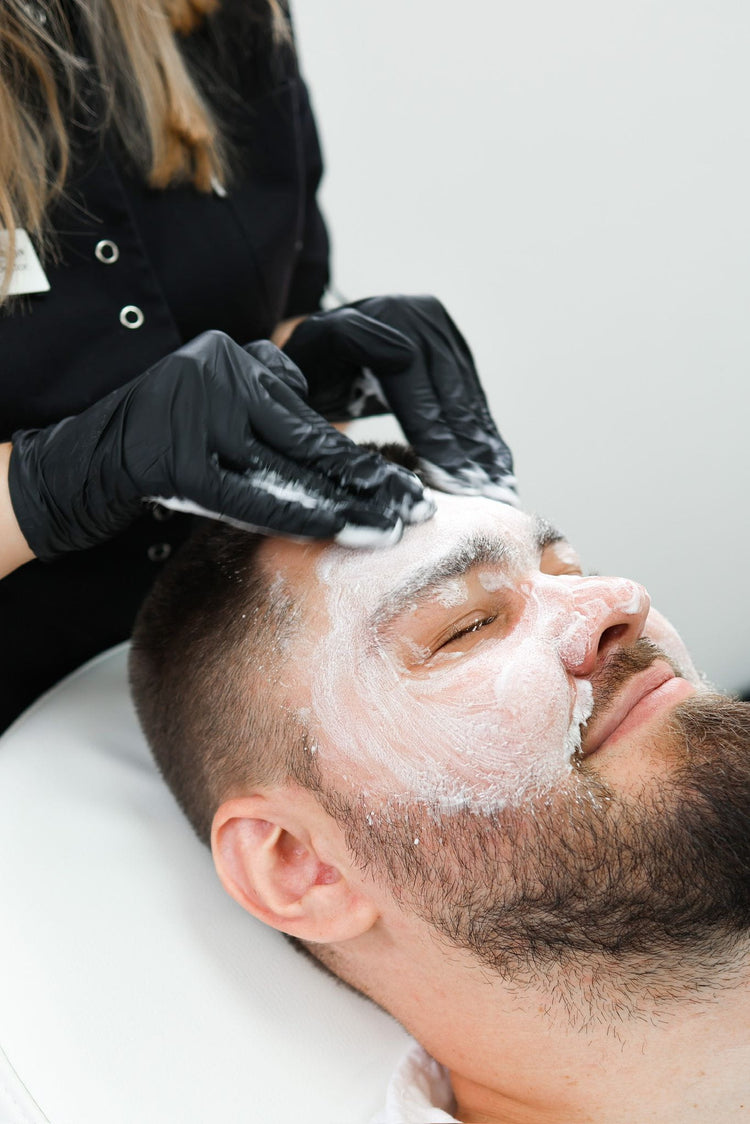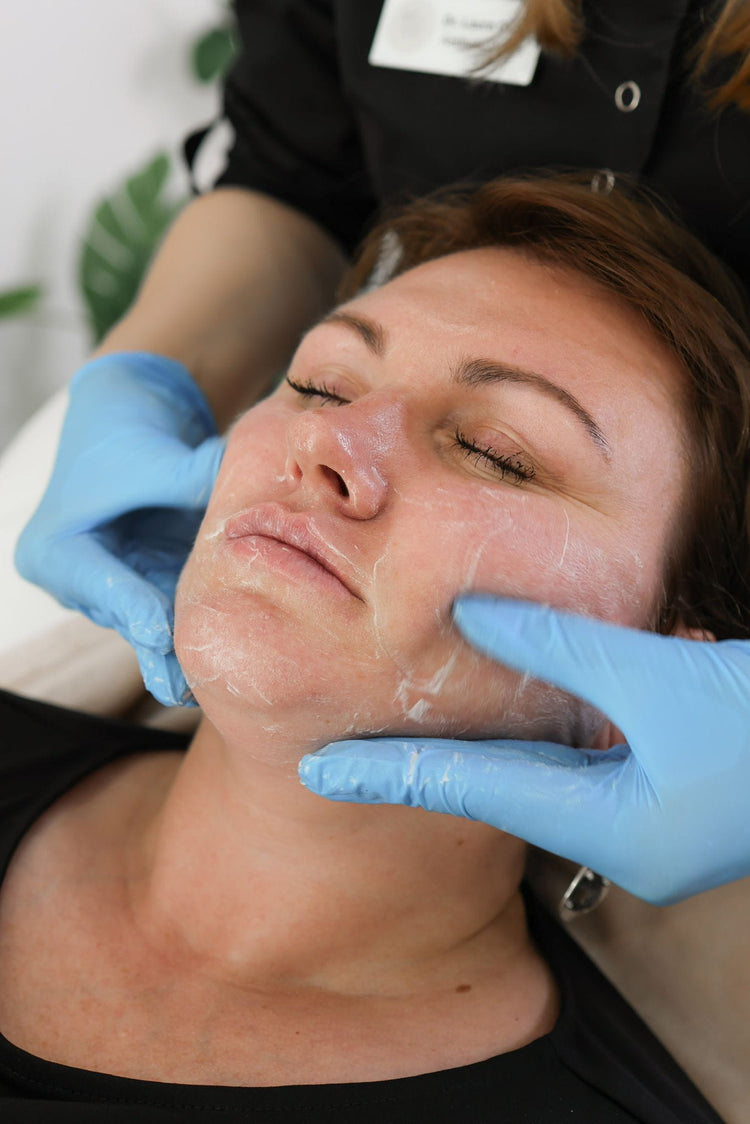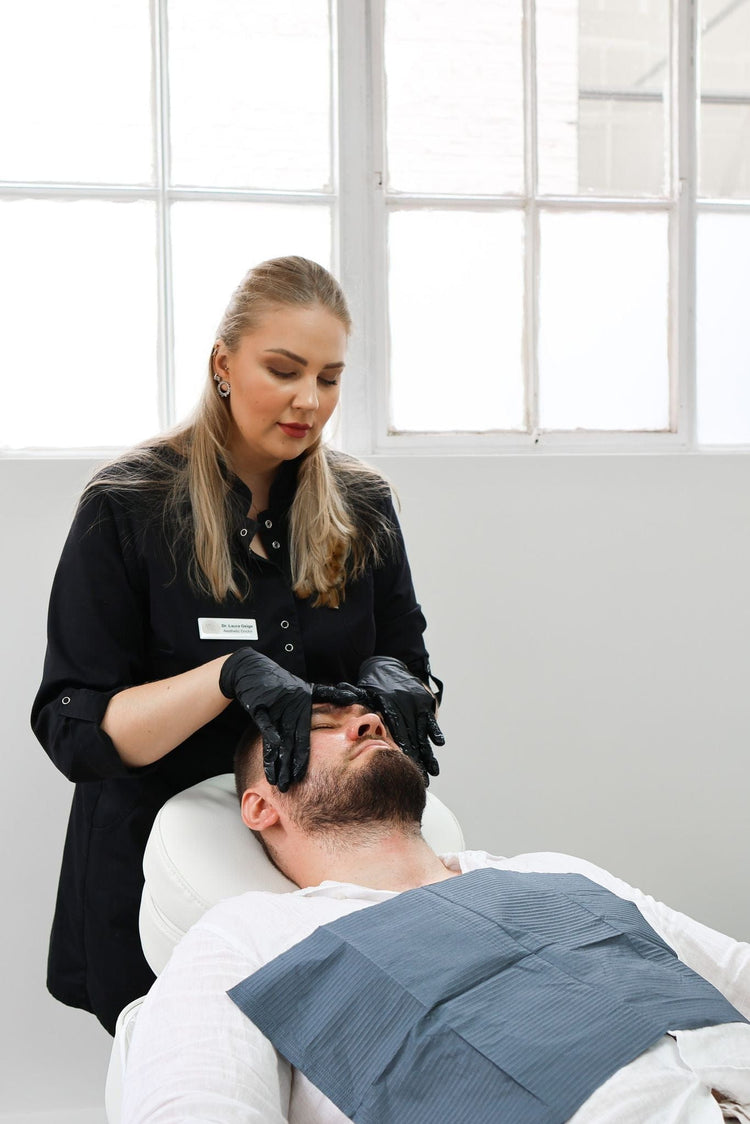Medical History Review
A thorough medical history review is an essential first step in any dermatology consultation, especially when addressing a condition like rosacea. Understanding past treatments, medications, allergies, and family history can provide valuable insights into the patient’s individual needs and help guide the development of a personalized treatment plan.

Current Symptoms
During a skin treatment consultation for rosacea, it is crucial to discuss current symptoms in detail. Patients should describe the type, location, severity, and frequency of their rosacea symptoms. This may include facial redness, flushing, bumps or pimples, visible blood vessels, dryness, itching, burning, or stinging sensations. Providing specific details about triggers like sun exposure, stress, heat, alcohol consumption, or certain foods can also be helpful in identifying potential contributing factors.
Past Treatments
A thorough medical history review is an essential first step in any dermatology consultation, especially when addressing a condition like rosacea. Understanding past treatments, medications, allergies, and family history can provide valuable insights into the patient’s individual needs and help guide the development of a personalized treatment plan.
During this review, it is important to discuss:
- Previous treatments for rosacea or any other skin conditions. This includes medications (both prescription and over-the-counter), topical creams, laser therapy, light therapy, or other procedures that have been tried.
- Any current medications or supplements being taken, as some can interact with rosacea treatments or exacerbate symptoms.
- Known allergies to medications, cosmetics, or other substances, as these could impact treatment options.
- Family history of rosacea or other skin conditions, as a genetic predisposition may play a role in the development of the condition.
Family History
A thorough understanding of a patient’s medical history is crucial when treating rosacea.
This review allows dermatologists to identify potential contributing factors, predict treatment responses, and minimize risks. Past treatments for rosacea or other skin conditions are particularly important. Details about medications (prescription and over-the-counter), topical creams, laser therapy, light therapy, or other procedures tried previously help guide future treatment decisions.
Current medications and supplements should also be discussed as some can interact with rosacea treatments or worsen symptoms. Allergies to medications, cosmetics, or other substances must be known to avoid adverse reactions during treatment. Finally, a family history of rosacea or other skin conditions is valuable because genetics may play a role in the development of the condition.
Allergies and Medications
A comprehensive medical history review is fundamental for effectively treating rosacea. This process involves a detailed discussion about past treatments, medications, allergies, and familial history. Past treatments for rosacea or any skin conditions are crucial as they provide insights into what has worked and what hasn’t.
Information about medications currently being taken is essential as some may interact with rosacea treatments or exacerbate symptoms. It’s equally important to understand allergies to medications, cosmetics, or other substances to prevent adverse reactions during treatment.
A family history of rosacea or skin conditions can also be informative, as genetics may contribute to the development of rosacea.
Skin Examination
The first step in treating rosacea is a thorough examination of the patient’s skin. This involves a visual assessment of the face and neck to identify signs of redness, flushing, bumps, pimples, visible blood vessels, dryness, or other characteristic symptoms. The dermatologist will also ask about the patient’s medical history, including any previous treatments for rosacea or other skin conditions, current medications and supplements, allergies, and family history of the condition.
Visual Inspection
During a skin treatment consultation for rosacea, it is crucial to discuss current symptoms in detail. Patients should describe the type, location, severity, and frequency of their rosacea symptoms. This may include facial redness, flushing, bumps or pimples, visible blood vessels, dryness, itching, burning, or stinging sensations.
- Providing specific details about triggers like sun exposure, stress, heat, alcohol consumption, or certain foods can also be helpful in identifying potential contributing factors.
A thorough understanding of a patient’s medical history is crucial when treating rosacea.
- Past treatments for rosacea or other skin conditions are particularly important. Details about medications (prescription and over-the-counter), topical creams, laser therapy, light therapy, or other procedures tried previously help guide future treatment decisions.
- Information about medications currently being taken is essential as some may interact with rosacea treatments or worsen symptoms.
- It’s equally important to understand allergies to medications, cosmetics, or other substances to prevent adverse reactions during treatment.
- A family history of rosacea or skin conditions can also be informative, as genetics may contribute to the development of rosacea.
Palpation (Touching the Skin)
Palpation involves the dermatologist physically touching and feeling the skin. They will gently press on different areas of the face and neck to assess the texture, temperature, and any tenderness or abnormalities.
Through palpation, the dermatologist can determine if there are any bumps, nodules, or thickening of the skin that might indicate underlying conditions beyond rosacea.
Diagnosis Discussion

A comprehensive diagnosis discussion is essential when addressing a skin condition like rosacea. This involves a thorough review of the patient’s medical history, a detailed examination of the skin, and a discussion about current symptoms and potential triggers.
Explanation of Rosacea Types
Rosacea is often categorized into different subtypes based on the primary symptoms experienced by the individual.
The most common types include erythematotelangiectatic rosacea (ETR), papulopustular rosacea (PPR), phymatous rosacea, and ocular rosacea.
ETR is characterized by persistent facial redness, flushing, and visible blood vessels.
PPR presents with red bumps, pimples, and pustules along with redness.
Phymatous rosacea involves thickening and enlargement of the skin tissue, most commonly affecting the nose.
Ocular rosacea affects the eyes and can cause symptoms like dryness, irritation, itching, burning, and blurred vision.
Understanding these different types helps healthcare professionals tailor appropriate treatment strategies to address the specific needs of each patient.
Confirmation of Diagnosis
Confirmation of diagnosis in a skin treatment consultation for rosacea involves a multi-step process that combines medical history review, physical examination, and symptom analysis.
The dermatologist will carefully assess the patient’s past treatments for rosacea or other skin conditions, medications they are currently taking, any known allergies, and family history of rosacea. This information helps pinpoint potential triggers, predict treatment responses, and minimize risks.
A thorough physical examination includes visual assessment of facial redness, flushing, bumps, pimples, visible blood vessels, dryness, or other characteristic symptoms. Palpation, involving gentle touching and feeling of the skin, allows the dermatologist to identify any abnormalities in texture, temperature, or tenderness. The discussion about current symptoms is crucial, with the patient providing details about the type, location, severity, and frequency of rosacea symptoms. Triggers such as sun exposure, stress, heat, alcohol consumption, or certain foods are also explored to identify potential contributing factors.
By integrating this comprehensive information, the dermatologist can confidently confirm a diagnosis of rosacea and determine the most appropriate treatment plan tailored to the patient’s individual needs and specific subtype of rosacea.
Treatment Plan Development
Treatment plans for rosacea are individualized based on the severity and type of symptoms a patient experiences.
Lifestyle Recommendations
Treatment plans for rosacea are individualized based on the severity and type of symptoms a patient experiences.
Lifestyle modifications often play a crucial role in managing rosacea symptoms and minimizing triggers. These recommendations may include:
- Protecting Skin from Sun Exposure: Regularly applying sunscreen with an SPF of 30 or higher, even on cloudy days, is essential to prevent flare-ups.
- Avoiding Triggers: Identifying and avoiding known triggers like alcohol, spicy foods, heat, stress, and certain cosmetics can significantly reduce symptom severity.
- Gentle Skincare Routine: Using mild cleansers and moisturizers formulated for sensitive skin helps avoid irritation. Exfoliating too often can worsen rosacea, so moderation is key.
- Maintaining a Healthy Lifestyle: Getting adequate sleep, managing stress through relaxation techniques, and engaging in regular physical activity can contribute to overall skin health and reduce flare-ups.
Medical Treatments (Topical or Oral)
Treatment plans for rosacea are individualized based on the severity and type of symptoms a patient experiences.
Medical treatments for rosacea can be either topical or oral. Topical treatments are applied directly to the skin and work by reducing inflammation, redness, and oil production. Common topical medications include:
- Metronidazole (MetroGel): An antibiotic that helps reduce redness and inflammation.
- Azelaic Acid (Finacea): Reduces redness, swelling, and acne lesions associated with rosacea.
- Ivermectin Cream (Soolantra): A topical medication that targets the mites responsible for triggering rosacea symptoms in some individuals.
- Brimonidine Gel (Mirvaso): A vasodilator that reduces visible blood vessels and redness on the face.
Oral medications are prescribed when topical treatments aren’t effective enough to control rosacea symptoms. These may include:
- Antibiotics: Such as doxycycline or tetracycline, help reduce inflammation and bacterial growth.
- Isotretinoin (Accutane): A powerful medication primarily used for severe acne but can be effective for treating recalcitrant rosacea cases. It has potential side effects and requires careful monitoring.
In addition to medications, other treatment options may be recommended based on individual needs.
Procedures (Laser, Light Therapy)
Procedures like laser therapy and light therapy can effectively treat various rosacea symptoms, particularly visible blood vessels and redness. Laser therapy uses concentrated light energy to target and destroy dilated blood vessels, reducing their appearance. Different types of lasers are used depending on the severity and location of the vessels.
Light therapy, also known as phototherapy, utilizes broad-spectrum light wavelengths to reduce inflammation and redness.
These procedures typically require multiple sessions spaced several weeks apart for optimal results.
It’s important to note that these treatments should only be performed by qualified dermatologists or medical professionals experienced in rosacea treatment.
Follow-Up Instructions
Follow-up instructions are crucial for ensuring the success of a rosacea treatment plan and managing the condition effectively. These instructions typically cover various aspects, including medication adherence, skincare regimens, trigger avoidance, lifestyle modifications, and scheduling future appointments.
Schedule for Subsequent Appointments
Follow-up instructions will be provided to ensure the effectiveness of the rosacea treatment plan.
These instructions may include:

* **Medication Adherence:** The dermatologist will explain how to properly use prescribed medications, including dosage, frequency, and potential side effects. Patients should be instructed to follow the medication schedule diligently for optimal results.
* **Skincare Regimens:** The dermatologist will provide specific recommendations for a gentle skincare routine tailored to rosacea-prone skin. This may include using mild cleansers, moisturizers formulated for sensitive skin, and sunscreens with high SPF protection. Patients should be advised on how often to apply these products and any precautions to take.
* **Trigger Avoidance:** Patients will receive guidance on identifying and avoiding known triggers that can exacerbate rosacea symptoms. This may involve limiting alcohol consumption, avoiding spicy foods, managing stress through relaxation techniques, protecting skin from sun exposure, and being mindful of certain cosmetics or skincare products.
* **Lifestyle Modifications:** Healthy lifestyle habits that contribute to overall skin health will be emphasized. This includes getting adequate sleep, managing stress effectively, and engaging in regular physical activity.
Scheduling future appointments is essential for monitoring treatment progress, making adjustments as needed, and addressing any emerging concerns. The frequency of follow-up appointments may vary depending on the individual patient’s response to treatment and the severity of their rosacea.
Homecare Recommendations
Follow-up instructions play a crucial role in the successful management of rosacea. These instructions provide patients with guidance on how to maintain treatment benefits, minimize symptom flare-ups, and ensure optimal long-term skin health.
Homecare recommendations are an integral part of follow-up instructions for rosacea.
- Skincare Routine: Patients will be advised on a gentle skincare regimen tailored to their individual needs. This often includes using mild cleansers, moisturizers formulated for sensitive skin, and sunscreens with SPF 30 or higher. Regular application of these products, as instructed, is essential for maintaining skin health and preventing flare-ups.
- Trigger Avoidance: Identifying and avoiding triggers specific to the patient is crucial. This may involve limiting alcohol consumption, avoiding spicy foods, managing stress through relaxation techniques, protecting skin from sun exposure, and choosing cosmetics and skincare products formulated for sensitive skin.
- Medication Adherence: Patients will receive clear instructions on how to use prescribed medications properly, including dosage, frequency, and duration of treatment. Consistent adherence to the medication schedule is vital for achieving optimal results.
The dermatologist will emphasize the importance of following these homecare recommendations diligently and attending scheduled follow-up appointments to monitor treatment progress and make any necessary adjustments to the plan.
Monitoring Symptoms and Side Effects
Follow-up instructions are crucial for ensuring the success of a rosacea treatment plan. They provide patients with guidance on how to maintain treatment benefits, minimize symptom flare-ups, and ensure optimal long-term skin health.
Here are some key elements typically included in follow-up instructions:
* **Medication Adherence:** Patients will be instructed on proper medication usage, including dosage, frequency, and potential side effects. They should understand the importance of adhering to the prescribed schedule for optimal results.
* **Skincare Regimens:** The dermatologist will provide a personalized skincare routine tailored to rosacea-prone skin. This may include using gentle cleansers, moisturizers formulated for sensitive skin, and sunscreens with high SPF protection. Instructions on how often to apply these products and any precautions to take will be given.
* **Trigger Avoidance:** Patients will learn to identify and avoid their personal triggers, which can exacerbate rosacea symptoms. This might involve limiting alcohol consumption, avoiding spicy foods, managing stress through relaxation techniques, protecting skin from sun exposure, and choosing cosmetics and skincare products formulated for sensitive skin.
* **Lifestyle Modifications:** Healthy lifestyle habits that support overall skin health will be emphasized. These may include getting adequate sleep, managing stress effectively, and engaging in regular physical activity.
* **Monitoring Symptoms:** Patients will be instructed on how to monitor their symptoms and report any changes or concerns to their dermatologist. They should pay attention to the frequency, severity, and duration of flare-ups.
* **Future Appointments:** Follow-up appointments will be scheduled to assess treatment progress, make necessary adjustments, and address any questions or concerns.
Monitoring symptoms is an essential part of managing rosacea effectively.
Patients should closely observe their skin and note:
* **Frequency of Flare-Ups:** How often do you experience redness, flushing, bumps, or other rosacea symptoms?
* **Severity of Symptoms:** Rate the intensity of your symptoms on a scale from mild to severe.
* **Duration of Flare-Ups:** How long do your flare-ups typically last?
* **Triggers:** What factors seem to worsen your symptoms? This could include sun exposure, stress, certain foods or drinks, heat, or specific cosmetics.
Patients should keep a symptom journal to track these details, which they can share with their dermatologist during follow-up appointments. Reporting any changes or unusual symptoms is crucial for adjusting treatment plans as needed and ensuring optimal management of rosacea.
Discover the benefits of professional skincare treatments at It’s Me & You Clinic
- Why CBD Gummies Are A Great Choice For Pain-Free Living - November 9, 2025
- What Is The Best Filler For Over 65? - November 7, 2025
- What Are The Benefits Of CBD Gummies For Skin Health? - November 6, 2025
